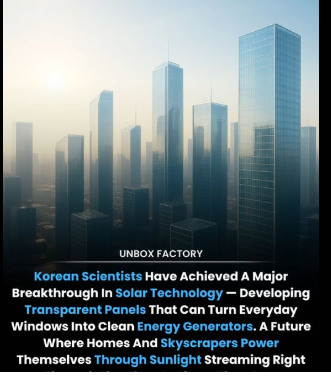Sustainable Aviation Fuel
Understanding Fischer-Tropsch (FT) Technology
The search for cleaner and more sustainable energy sources has led to renewed interest in Fischer-Tropsch (FT) technology.
Developed in the early 20th century, FT synthesis enables the conversion of various carbonaceous feedstocks, such as coal, natural gas, or biomass, into a wide range of valuable hydrocarbon products.
This article explores the fundamentals of FT technology, its environmental advantages, and its potential as a key player in the transition to a low-carbon future.
Definition of Fischer-Tropsch (FT)
The Fischer-Tropsch (FT) process is a chemical reaction and technology used to convert carbon-based feedstocks, such as coal, natural gas, or biomass, into synthetic hydrocarbons, including liquid fuels and waxes.
It was developed by German chemists Franz Fischer and Hans Tropsch in the 1920s.
The FT process involves a series of catalytic reactions that transform carbon monoxide (CO) and hydrogen (H2) gases into various hydrocarbon products. The initial step is the synthesis gas (syngas) production, where the feedstock is typically gasified or reformed to produce a mixture of CO and H2. The syngas is then purified to remove impurities before being fed into the FT reactor.
Inside the FT reactor, the syngas is brought into contact with a catalyst, usually based on iron or cobalt, at elevated temperatures and pressures. The catalyst facilitates a series of chemical reactions, including the formation of long-chain hydrocarbons through polymerization and hydrogenation processes. These reactions produce a range of products, such as liquid hydrocarbons (e.g., gasoline, diesel, and kerosene) and solid waxes.
The Fischer-Tropsch process is considered a versatile and flexible technology because it can utilize different feedstocks, including coal, natural gas, and biomass, allowing for the production of synthetic fuels without relying solely on petroleum reserves. The resulting synthetic hydrocarbons can be used as drop-in replacements for conventional fuels, providing an alternative source of energy that can help reduce dependence on fossil fuels and mitigate greenhouse gas emissions.
Benefit of Fischer-Tropsch (FT)
The Fischer-Tropsch process is a catalytic chemical reaction that converts carbon monoxide (CO) and hydrogen (H2) gases, collectively known as syngas, into hydrocarbons through a series of complex reactions. These hydrocarbons can be further processed into liquid fuels, waxes, and other valuable chemical compounds.
FT technology offers a versatile and flexible approach to convert a variety of feedstocks into high-quality, synthetic hydrocarbons.
Environmental Benefits:
One of the significant advantages of FT technology is its potential to reduce greenhouse gas emissions and combat climate change. By utilizing carbon-neutral or low-carbon feedstocks like biomass or renewable natural gas, the FT process can produce fuels with significantly lower carbon dioxide (CO2) emissions compared to conventional petroleum-derived fuels. Furthermore, the resulting synthetic fuels can be tailored to have improved combustion properties, leading to reduced particulate matter, sulfur emissions, and other harmful pollutants.
Fuel Diversity and Energy Security:
FT technology provides a pathway to diversify the fuel mix and enhance energy security. It offers the ability to produce liquid hydrocarbon fuels, such as gasoline, diesel, and aviation fuel, from various carbon sources. This versatility enables countries to reduce their dependence on fossil fuel imports and utilize domestic resources, including coal, natural gas, and biomass, to produce their own clean and sustainable fuels. This fuel diversity contributes to a more resilient and self-sufficient energy system.
Integration with Renewable Energy:
The integration of FT technology with renewable energy sources further enhances its sustainability. Renewable electricity can be used to power the FT process, allowing for the production of synthetic fuels with even lower carbon footprints. Additionally, surplus renewable electricity can be stored as synthetic hydrocarbons, enabling the utilization of intermittent renewable energy sources, such as wind and solar, on-demand. This integration bridges the gap between renewable energy generation and energy storage, fostering a more balanced and reliable energy system.
Fischer-Tropsch (FT) Production
Fischer-Tropsch (FT) production refers to the industrial process of implementing the Fischer-Tropsch synthesis to convert carbon-based feedstocks, such as coal, natural gas, or biomass, into synthetic hydrocarbon products. The process involves several steps, including feedstock preparation, syngas production, syngas purification, and the actual FT synthesis.
Feedstock Preparation: The carbon-based feedstock, such as coal or biomass, may need to undergo preprocessing steps to prepare it for conversion into syngas. This can involve processes like drying, grinding, or gasification, depending on the specific feedstock used.
Syngas Production: The next step is the production of synthesis gas (syngas), which is a mixture of carbon monoxide (CO) and hydrogen (H2).
The feedstock is typically subjected to high temperatures and controlled amounts of oxygen or steam to generate the syngas. Gasification or reforming processes are commonly employed for this purpose.
Syngas Purification: The produced syngas may contain impurities such as sulfur compounds, particulate matter, and trace contaminants. These impurities need to be removed to ensure the efficiency and longevity of the FT catalyst. Purification methods include processes like scrubbing, filtering, and chemical treatments to achieve the desired gas composition.
Fischer-Tropsch Synthesis: The purified syngas is then introduced into a Fischer-Tropsch reactor, where it comes into contact with a suitable catalyst. Typically, iron or cobalt-based catalysts are used. The reactor operates at elevated temperatures and pressures to facilitate the catalytic reactions. The CO and H2 molecules undergo polymerization and hydrogenation reactions, leading to the formation of long-chain hydrocarbons.
Product Separation and Refining: The product stream from the FT reactor contains a mixture of hydrocarbons, including liquid fuels and solid waxes. Additional refining steps are required to separate and purify the desired products. This may involve processes such as distillation, fractionation, hydrotreating, and upgrading to obtain specific fuel fractions with desired properties.
The overall FT production process is complex and capital-intensive, requiring careful optimization of reaction conditions, catalyst selection, and purification techniques to achieve desired product yields and quality. FT technology has been historically employed for the production of synthetic fuels, especially in situations where conventional petroleum resources are limited or inaccessible. However, it has also gained interest in recent years as a potential route for sustainable and low-carbon synthetic fuel production from renewable feedstocks, such as biomass or captured carbon dioxide.
Challenges and Future Outlook of Fischer-Tropsch (FT)
The Fischer-Tropsch (FT) process has several challenges and ongoing research to address them, as well as potential future developments.
Here are some of the challenges and the future outlook for FT technology:
Feedstock Availability and Cost: One of the primary challenges for FT production is the availability and cost of suitable feedstocks. Traditional feedstocks like coal and natural gas are finite resources, and their prices can be volatile. Finding alternative, sustainable feedstocks such as biomass or carbon dioxide captured from industrial processes is an area of active research. The future outlook involves developing cost-effective and scalable methods for utilizing these alternative feedstocks.
Catalyst Efficiency and Lifetime: Catalysts play a crucial role in the FT process. Improving the catalyst efficiency, activity, and selectivity remains an area of focus. Researchers are exploring new catalyst materials and developing catalyst formulations with improved stability and resistance to deactivation, which can extend catalyst lifetime and reduce operational costs.
Carbon Efficiency and Emissions: The FT process involves the conversion of carbon-based feedstocks, which can contribute to greenhouse gas emissions. Enhancing the carbon efficiency of the process, minimizing carbon dioxide emissions, and exploring carbon capture and utilization technologies are important for the future of FT production. The development of catalysts and process configurations that facilitate carbon capture and utilization within the FT process itself is an area of research.
Product Distribution and Quality: The FT process produces a range of hydrocarbon products, including liquid fuels and waxes. Achieving desired product distribution and quality can be challenging, as different applications require specific fuel properties. Future developments involve optimizing the process conditions, catalyst formulations, and refining techniques to tailor the product output for specific applications and market demands.
Process Efficiency and Scale-up: The FT process is energy-intensive and requires high-pressure and high-temperature operation. Improving process efficiency, reducing energy consumption, and optimizing the reactor design are ongoing research goals. Additionally, scaling up FT production from laboratory-scale to commercial-scale is a challenge that requires careful engineering, process optimization, and economic viability studies.
Renewable and Sustainable FT Processes: With growing concerns about climate change and the need to transition to renewable energy sources, there is increasing interest in developing renewable and sustainable FT processes. This involves utilizing biomass or carbon dioxide as feedstocks and integrating FT technology with renewable energy sources, such as solar or wind, to power the process. The future outlook involves advancing these sustainable FT pathways and making them economically competitive.
Overall, the future of Fischer-Tropsch technology lies in addressing these challenges through ongoing research and innovation. Advancements in catalyst development, feedstock utilization, process optimization, and sustainability will contribute to the continued evolution and broader adoption of FT production for synthetic fuels and other valuable hydrocarbon products.
Conclusion for Fischer-Tropsch (FT) Technology
Fischer-Tropsch (FT) technology offers a versatile and flexible approach for converting carbon-based feedstocks into synthetic hydrocarbons.
Developed in the 1920s, FT technology has been used to produce liquid fuels and waxes, providing an alternative source of energy to conventional petroleum-based products.
Despite its long history, FT technology continues to face challenges that require ongoing research and development. These challenges include feedstock availability and cost, catalyst efficiency and lifetime, carbon efficiency and emissions, product distribution and quality, process efficiency and scale-up, and the development of renewable and sustainable FT processes.
The future outlook for FT technology is promising. Researchers are exploring alternative feedstocks such as biomass and carbon dioxide to reduce reliance on finite resources. They are also working on improving catalyst performance, stability, and selectivity, as well as optimizing process conditions for better energy efficiency. Efforts are being made to enhance carbon capture and utilization within the FT process itself and tailor the product output to meet specific application requirements.
Furthermore, the integration of FT technology with renewable energy sources holds the potential for sustainable and low-carbon FT processes. This aligns with the global transition towards renewable energy and the need to reduce greenhouse gas emissions.
In summary, FT technology has made significant contributions to synthetic fuel production, and its continued development and optimization offer promise for the future. By addressing the existing challenges and embracing sustainable practices, FT technology can play a vital role in meeting energy demands, reducing environmental impact, and advancing the transition towards a more sustainable energy future.
https://www.exaputra.com/2023/05/fischer-tropsch-ft-technology.html
Renewable Energy
Educating for Peace
 What this really means is teaching kids that:
What this really means is teaching kids that:
All human beings, rich or poor, black or white, gay or straight, have equal value.
The people who have had the privilege to see the Earth from space are uniformly shocked, usually moved to tears, to see that all the lines and boundaries that define our geopolitical world do not really exist; they are constructs of the uber-wealthy who profit from division and war.
I would love to see Maria Montessori’s dream come true. Yet, as a realist, living in the United States, I see the enormity of the challenge we face here.
Renewable Energy
Did January 6th Really Happen, or Was it a Hoax, as Trump Wants You to Believe?
 If I had told you ten years ago that one man would rise to power in the United States who would have such a command over the American people that he could make up any lie he wanted to — and it would be broadly recognized as true — would you have believed me?
If I had told you ten years ago that one man would rise to power in the United States who would have such a command over the American people that he could make up any lie he wanted to — and it would be broadly recognized as true — would you have believed me?
Anyone would have bet $100 against a dime that this was impossible. Yet here we are, in a land where Trump can literally rewrite history, just by opening his mouth.
Did January 6th Really Happen, or Was it a Hoax, as Trump Wants You to Believe?
Renewable Energy
Transparent Solar PV
 This is theoretically possible; it transmits visible light and uses other frequencies (ultra-violet and infrared) to knock electrons out of the substrate. But it means higher costs and lower efficiencies. Of zero practical value at this point.
This is theoretically possible; it transmits visible light and uses other frequencies (ultra-violet and infrared) to knock electrons out of the substrate. But it means higher costs and lower efficiencies. Of zero practical value at this point.
-
Climate Change2 years ago
Spanish-language misinformation on renewable energy spreads online, report shows
-
Climate Change3 months ago
Guest post: Why China is still building new coal – and when it might stop
-
Climate Change Videos2 years ago
The toxic gas flares fuelling Nigeria’s climate change – BBC News
-

 Greenhouse Gases1 year ago
Greenhouse Gases1 year ago嘉宾来稿:满足中国增长的用电需求 光伏加储能“比新建煤电更实惠”
-
Greenhouse Gases3 months ago
Guest post: Why China is still building new coal – and when it might stop
-

 Climate Change1 year ago
Climate Change1 year ago嘉宾来稿:满足中国增长的用电需求 光伏加储能“比新建煤电更实惠”
-

 Carbon Footprint2 years ago
Carbon Footprint2 years agoUS SEC’s Climate Disclosure Rules Spur Renewed Interest in Carbon Credits
-
Renewable Energy4 months ago
US Grid Strain, Possible Allete Sale

%20Technology.jpg)










